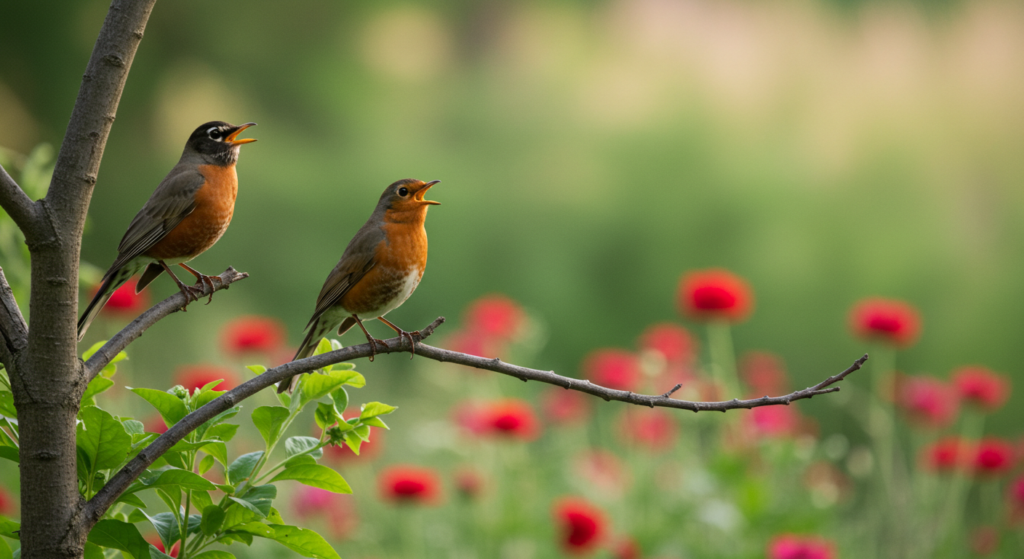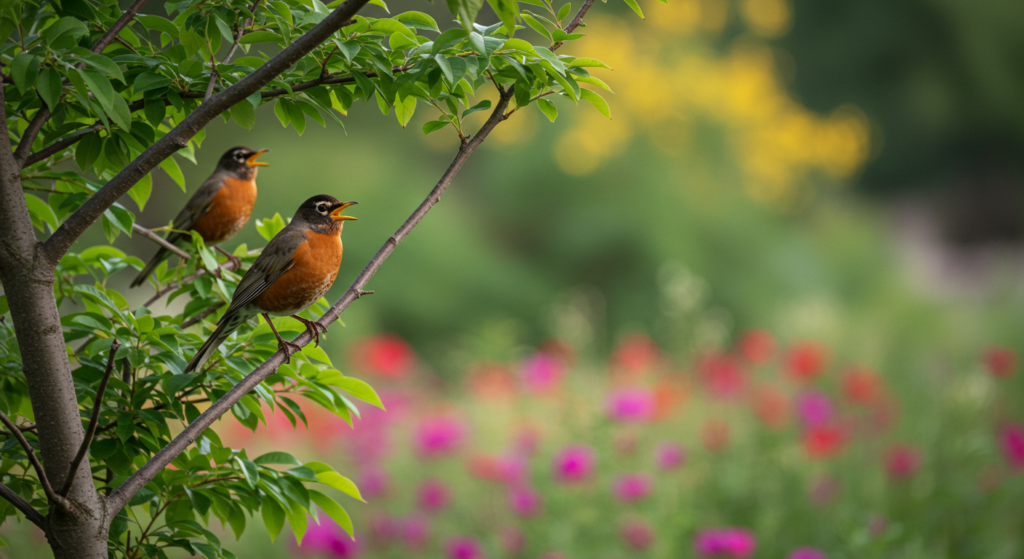Table of Contents
- Introduction
- The American Robin: A Symbol of Spring
- Habitat and Behavior
- Diet and Feeding Habits
- Migration Patterns
- Conservation Status
- Conclusion
- FAQs
Introduction
The American Robin (Turdus migratorius) is one of the most recognizable and beloved birds in North America. Often referred to as a harbinger of spring, this bird is celebrated for its cheerful song and vibrant appearance. In this article, we’ll explore the American Robin’s habitat, behavior, diet, migration patterns, and its significance as a symbol of the changing seasons.

The American Robin: A Symbol of Spring
The American Robin is widely regarded as a sign that spring has arrived. Its return to northern regions after winter is eagerly anticipated by birdwatchers and nature enthusiasts. With its distinctive orange-red breast and melodious song, the robin embodies the renewal and vitality of the season.
Habitat and Behavior
American Robins are highly adaptable birds found in a variety of environments, including forests, gardens, parks, and suburban areas. They are known for their ground-foraging behavior, often seen hopping across lawns in search of food. Robins are also social birds, frequently seen in flocks during the non-breeding season.
Diet and Feeding Habits
The diet of the American Robin consists primarily of insects, earthworms, and fruits. During the spring and summer, they rely heavily on protein-rich insects, while in the fall and winter, they shift to a fruit-based diet. This dietary flexibility allows them to thrive in diverse environments.
Migration Patterns
While some American Robins are year-round residents in milder climates, many populations migrate seasonally. In the fall, they move southward to escape harsh winter conditions, returning to northern regions in early spring. Their migration is closely tied to the availability of food and favorable weather conditions.
Conservation Status
The American Robin is not currently considered threatened or endangered. Its widespread distribution and adaptability have contributed to its stable population. However, habitat loss and climate change pose potential risks, making conservation efforts important for ensuring their continued survival.
Conclusion
The American Robin is more than just a bird; it is a cherished symbol of spring and renewal in North America. Its adaptability, vibrant appearance, and melodic song make it a favorite among bird enthusiasts. By understanding and protecting this iconic species, we can ensure that future generations will continue to enjoy the sight and sound of robins heralding the arrival of spring.

FAQs
1. Why is the American Robin called a harbinger of spring?
The American Robin is associated with spring because it returns to northern regions as the weather warms, signaling the end of winter.
2. What do American Robins eat?
Their diet includes insects, earthworms, and fruits, varying by season.
3. Do all American Robins migrate?
No, some populations in milder climates remain year-round, while others migrate seasonally.
4. Where can I find American Robins?
They inhabit forests, gardens, parks, and suburban areas across North America.
5. Are American Robins endangered?
No, they are currently not considered threatened or endangered
